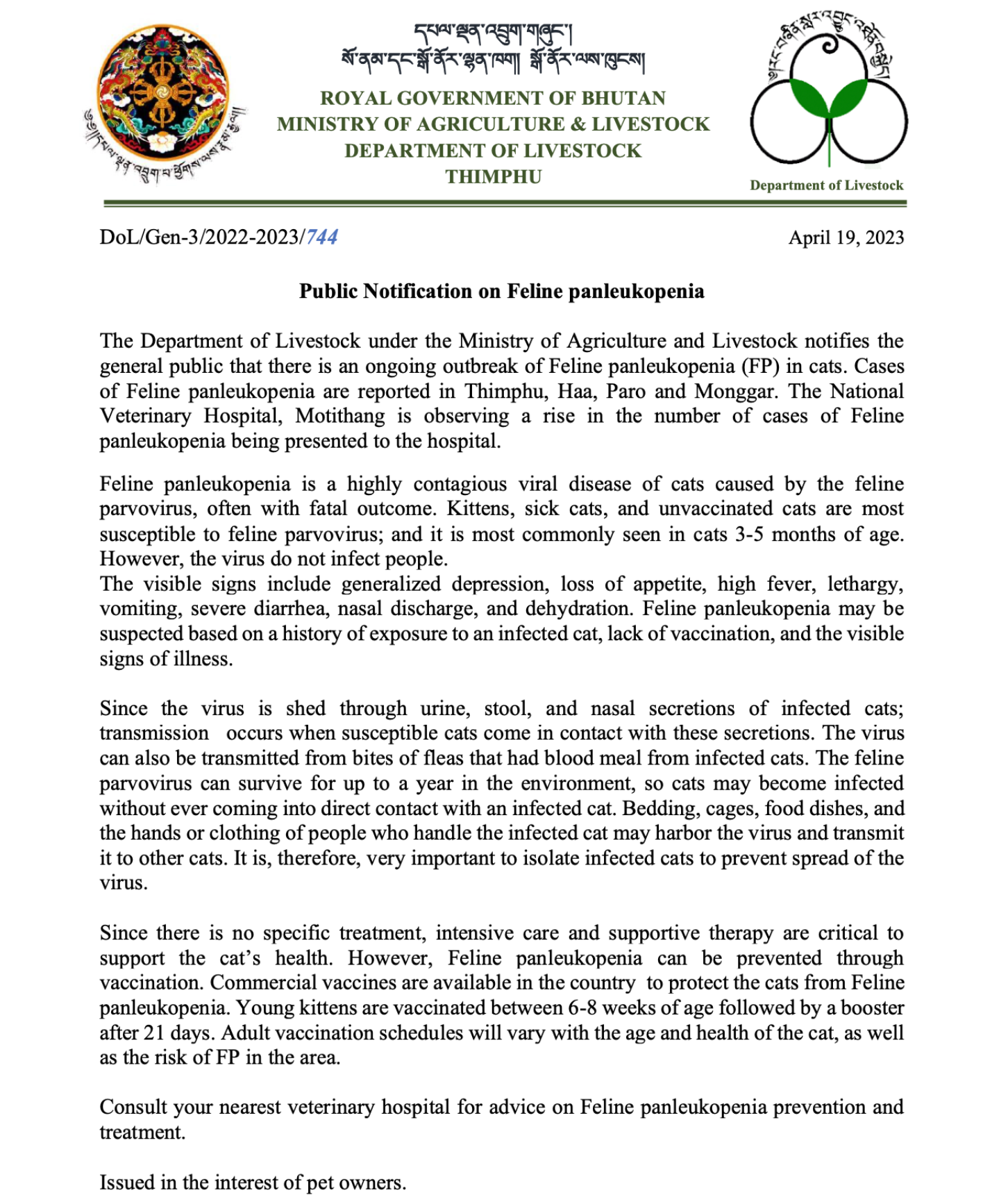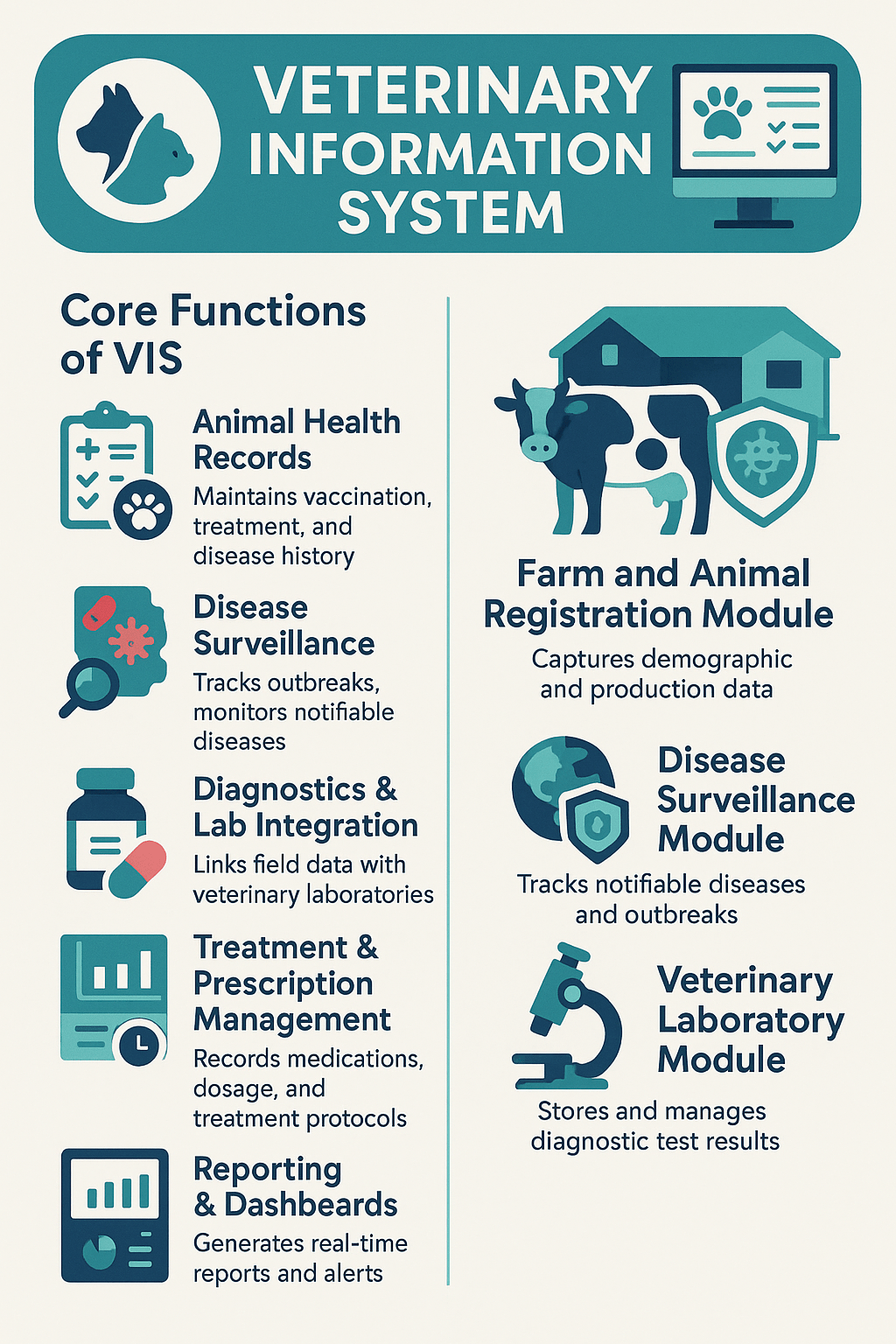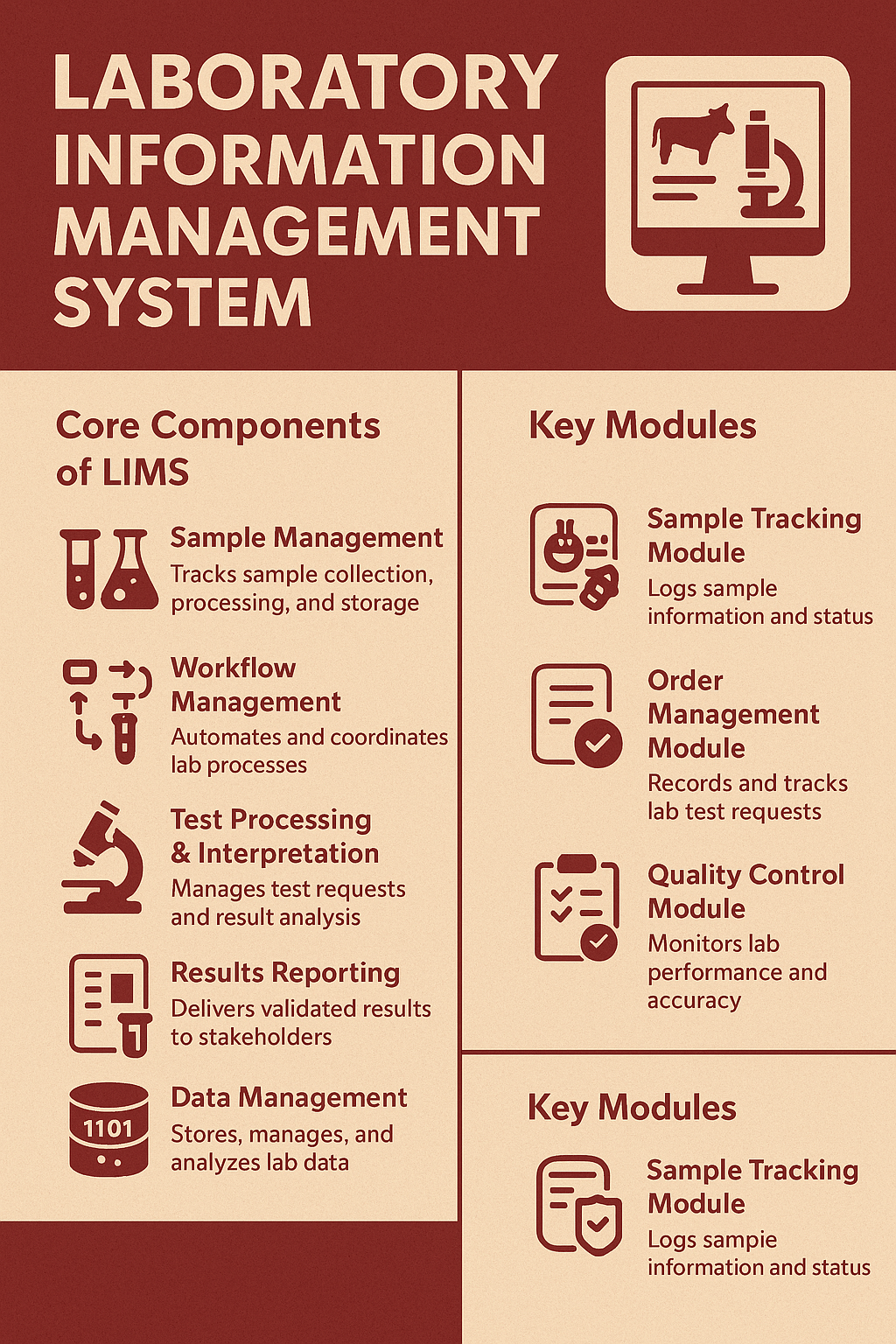
Feline panleukopenia is a highly contagious viral disease of cats caused by the feline parvovirus, often with fatal outcome. Kittens, sick cats, and unvaccinated cats are most susceptible to feline parvovirus; and it is most commonly seen in cats 3-5 months of age. However, the virus do not infect people.
Since the virus is shed through urine, stool, and nasal secretions of infected cats; transmission occurs when susceptible cats come in contact with these secretions. The virus can also be transmitted from bites of fleas that had blood meal from infected cats. The feline parvovirus can survive for up to a year in the environment, so cats may become infected without ever coming into direct contact with an infected cat. Bedding, cages, food dishes, and the hands or clothing of people who handle the infected cat may harbor the virus and transmit it to other cats. It is, therefore, very important to isolate infected cats to prevent spread of the virus.
The visible signs include generalized depression, loss of appetite, high fever, lethargy, vomiting, severe diarrhea, nasal discharge, and dehydration. Feline panleukopenia may be suspected based on a history of exposure to an infected cat, lack of vaccination, and the visible signs of illness.
Since there is no specific treatment, intensive care and supportive therapy are critical to support the cat’s health. However, Feline panleukopenia can be prevented through vaccination. Commercial vaccines are available in the country to protect the cats from Feline panleukopenia. Young kittens are vaccinated between 6-8 weeks of age followed by a booster after 21 days. Adult vaccination schedules will vary with the age and health of the cat, as well as the risk of FP in the area.
Consult your nearest veterinary hospital for advice on Feline panleukopenia prevention and treatment.
Issued in the interest of pet owners.
![]()






